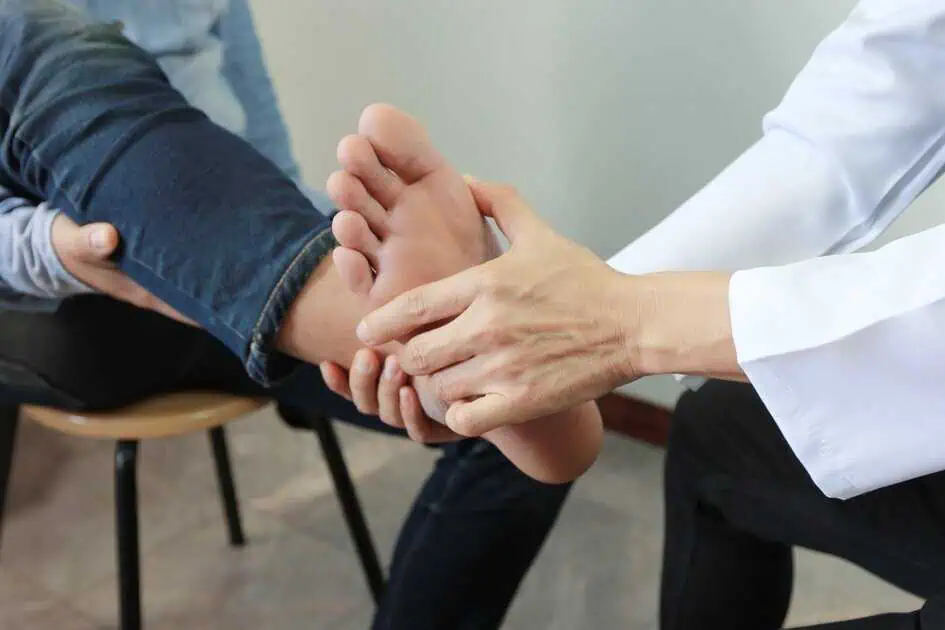Table of Contents
Introduction:
Neuropathy is a condition that affects millions of people worldwide, causing tingling, numbness, and pain in the hands and feet. It occurs when there is damage to or dysfunction of the nerves, often due to underlying health issues such as diabetes, autoimmune diseases, infections, or traumatic injuries. While neuropathy can significantly impact a person’s quality of life, incorporating exercise into one’s routine can offer numerous benefits, from improving circulation to managing symptoms and enhancing overall well-being. In this blog post, we will explore the relationship between neuropathy and exercise, providing valuable tips for safe and effective workouts to promote neuropathy care and enhance the benefits of neuropathy treatment. Whether you’re newly diagnosed or managing chronic symptoms, understanding how to move safely is key to long-term relief and mobility.
Understanding Neuropathy:
Neuropathy, also known as peripheral neuropathy, affects the peripheral nerves responsible for transmitting signals between the central nervous system and the rest of the body. Damage to these nerves can disrupt sensation, movement, and organ function, leading to numbness, tingling, burning pain, muscle weakness, and sensitivity to touch.
Benefits of Neuropathy Treatment:
Effective neuropathy treatment addresses underlying causes, manage symptoms, and prevents further nerve damage. Treatment strategies may include medication, physical therapy, lifestyle modifications, and alternative therapies. By managing neuropathy effectively, individuals can experience improvements in their quality of life and reduce the risk of complications.
Role of Exercise in Neuropathy Care:
Exercise is a vital component of neuropathy care, offering a range of physical and psychological benefits. When performed safely and appropriately, exercise can help alleviate neuropathic symptoms, improve mobility, enhance circulation, control blood sugar levels, reduce stress, and boost overall health and well-being.
Types of Exercise for Neuropathy:
When designing an exercise program for neuropathy, it’s essential to focus on activities that are gentle, low-impact, and do not exacerbate symptoms. Some suitable forms of exercise for individuals with neuropathy include:
Aerobic Exercise:
Walking: A low-impact activity that promotes cardiovascular health and improves circulation without putting excessive strain on the joints.
Cycling: Riding a stationary or recumbent bike can provide a safe and effective cardiovascular workout while minimizing stress on the feet and ankles.
Swimming: Water-based exercises like swimming or water aerobics offer a full-body workout with minimal impact on the joints, making them ideal for individuals with neuropathy.
Strength Training:
Resistance Band Exercises: Resistance bands can help strengthen muscles without putting undue stress on the joints. Focus on exercises targeting major muscle groups like the arms, legs, and core.
Bodyweight Exercises: Simple bodyweight exercises like squats, lunges, and modified push-ups can improve strength, stability, and balance.
Flexibility and Balance Exercises:
Yoga: Gentle yoga poses and stretching exercises can enhance flexibility, balance, and relaxation while promoting circulation and reducing stress.
Tai Chi: This gentle form of martial arts focuses on slow, flowing movements and deep breathing, improving balance, coordination, and mindfulness.
Tips for Safe and Effective Workouts:
When incorporating exercise into a neuropathy care routine, it’s essential to prioritize safety and listen to your body. Here are some tips to ensure safe and effective workouts:
Start Slowly: Begin with short, low-intensity exercise sessions and gradually increase the duration and intensity as your tolerance improves.
Choose Comfortable Footwear: Wear supportive shoes with cushioned soles to protect your feet and reduce the risk of injury during exercise.
Monitor Blood Sugar Levels: If you have diabetes-related neuropathy, monitor your blood sugar levels closely before, during, and after exercise to prevent hypoglycemia or hyperglycemia.
Stay Hydrated: Drink plenty of water before, during, and after exercise to stay hydrated and maintain optimal bodily function.
Listen to Your Body: Pay attention to any signs of discomfort or pain during exercise, and modify or stop activities as needed. Consult with a healthcare professional if you experience persistent or worsening symptoms.
Conclusion:
Incorporating exercise into your neuropathy care routine can provide significant benefits for managing symptoms and improving overall well-being. Individuals with neuropathy can enhance circulation, strengthen muscles, and reduce stress by engaging in gentle, low-impact activities such as walking, cycling, and yoga. However, it’s essential to approach exercise safely and listen to your body’s signals to avoid exacerbating symptoms or causing injury.
If you’re living with neuropathy and looking for personalized care and treatment options, consider scheduling a consultation with Mesa Medical Health & Wellness. Our experienced healthcare professionals can assess your condition, develop a tailored treatment plan, and provide guidance on incorporating exercise into your daily routine. Take the first step towards better neuropathy care and a healthier, more active lifestyle today.
Book your consultation with Mesa Medical Health & Wellness and start your journey towards optimal neuropathy management and improved quality of life.



